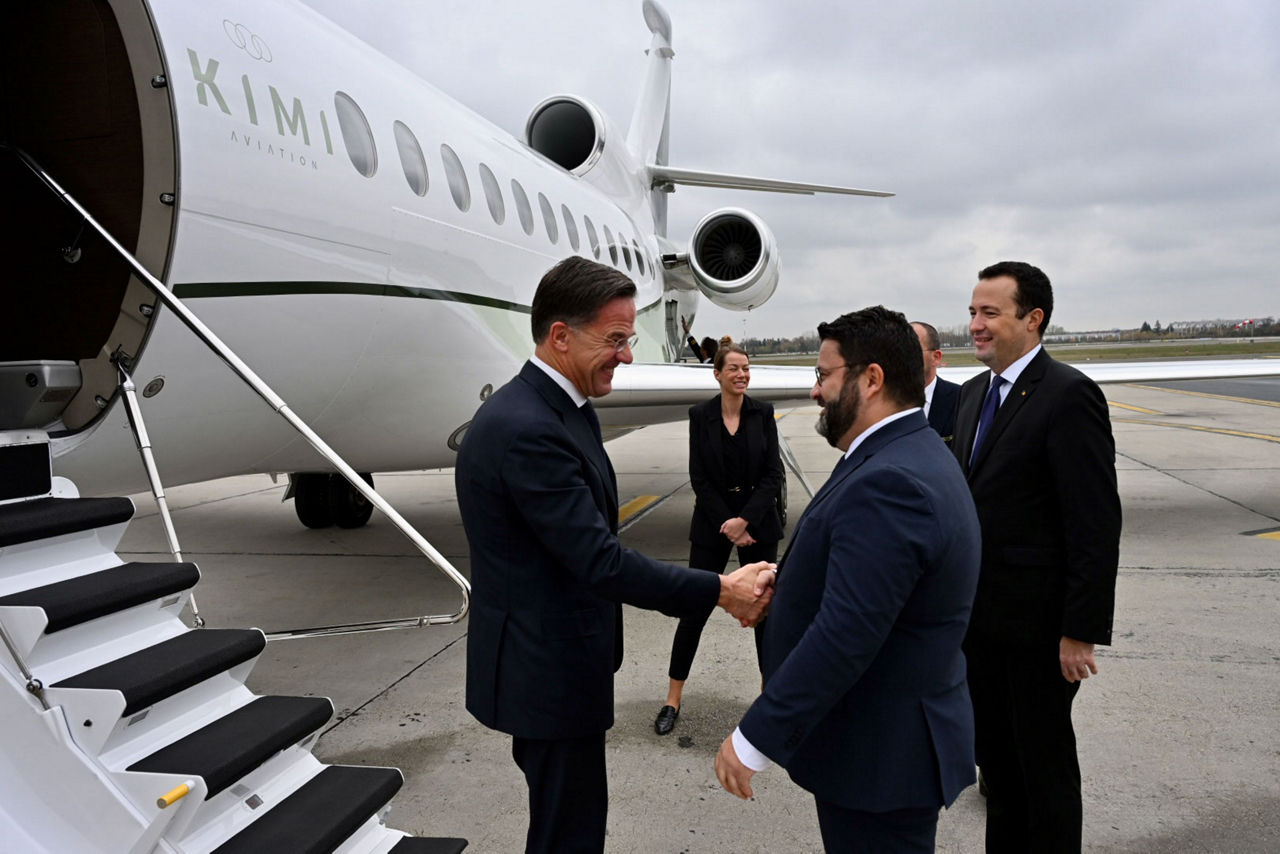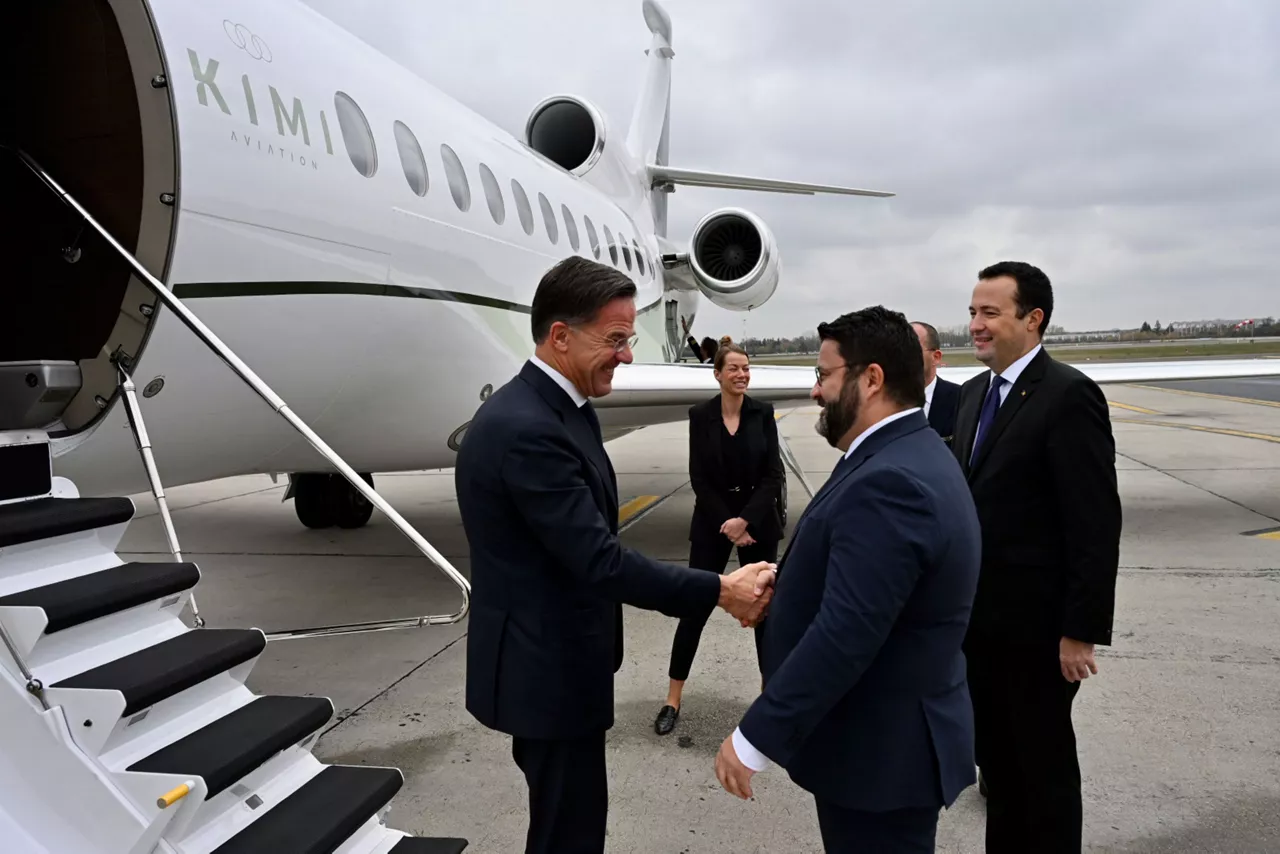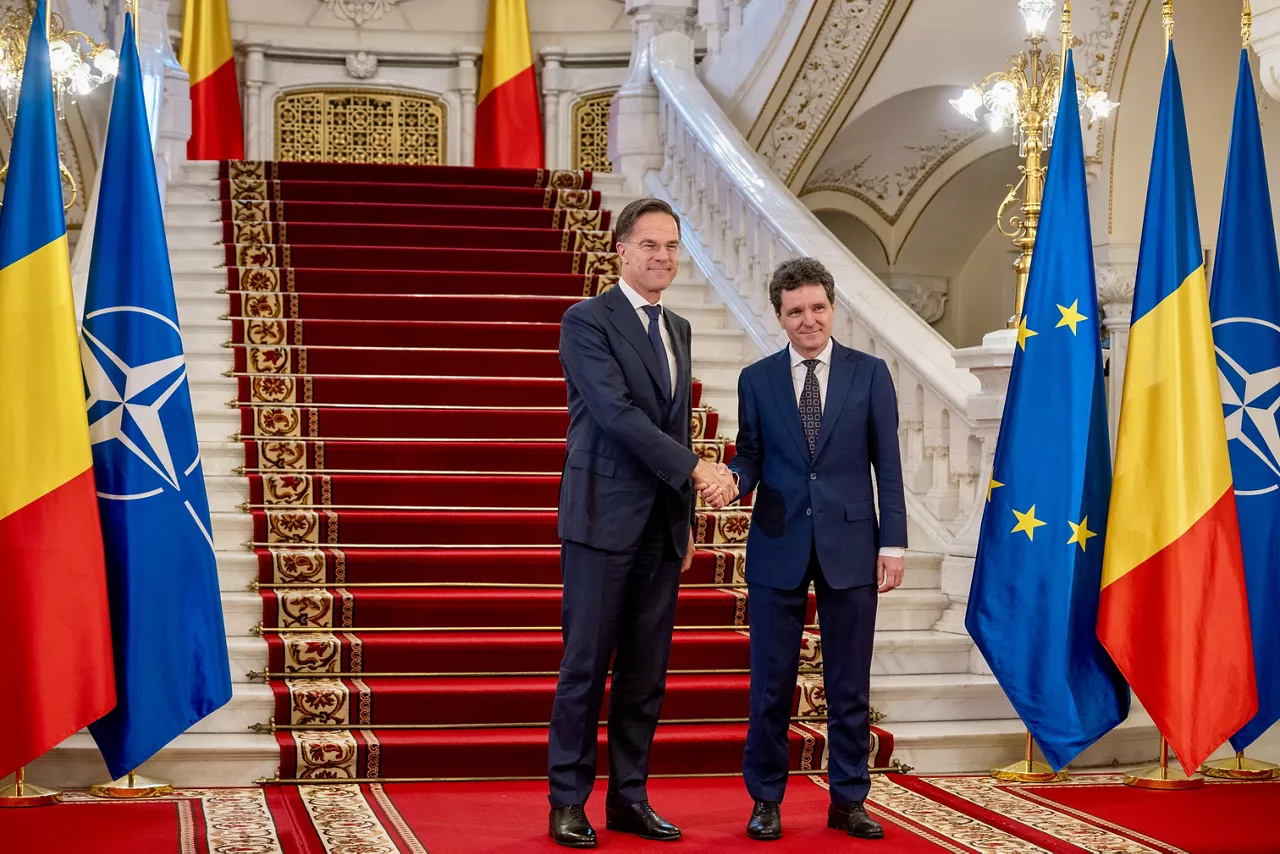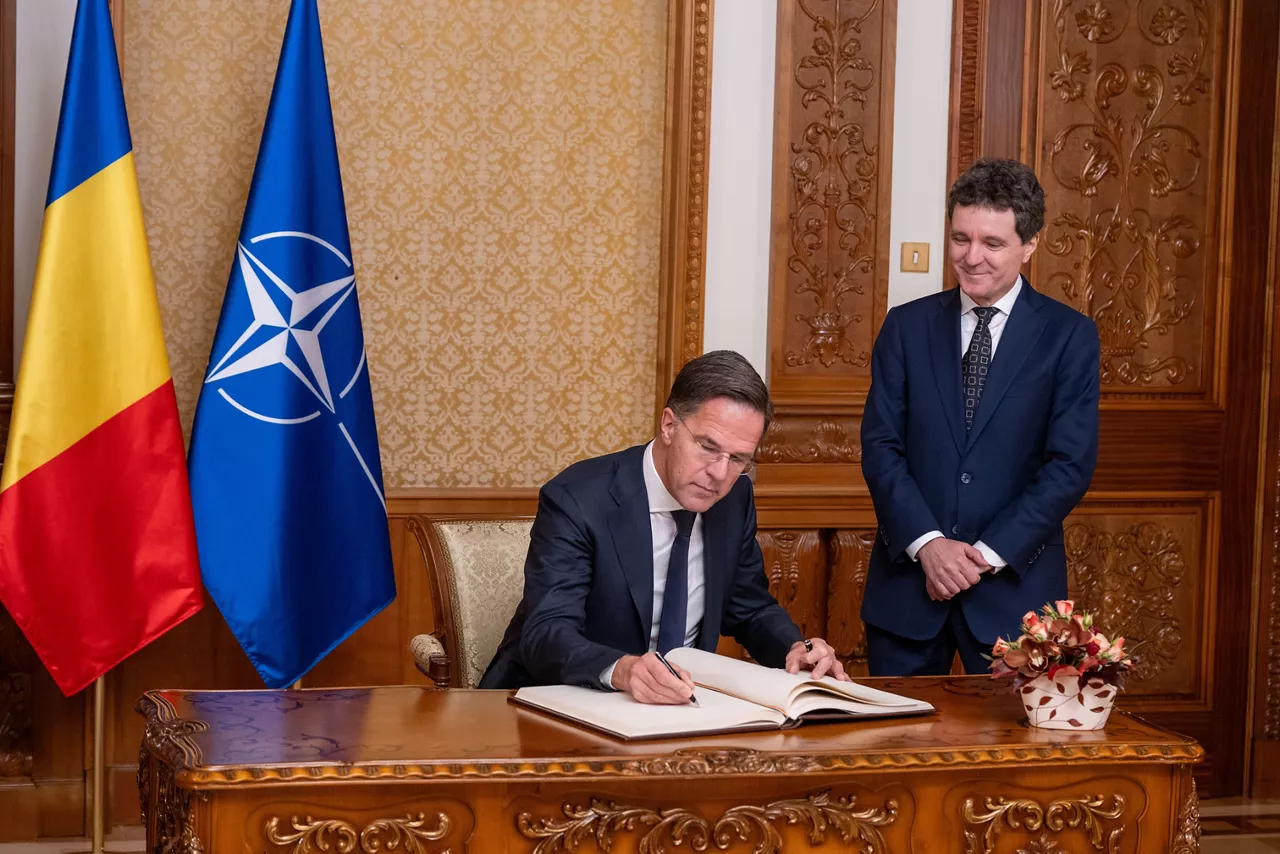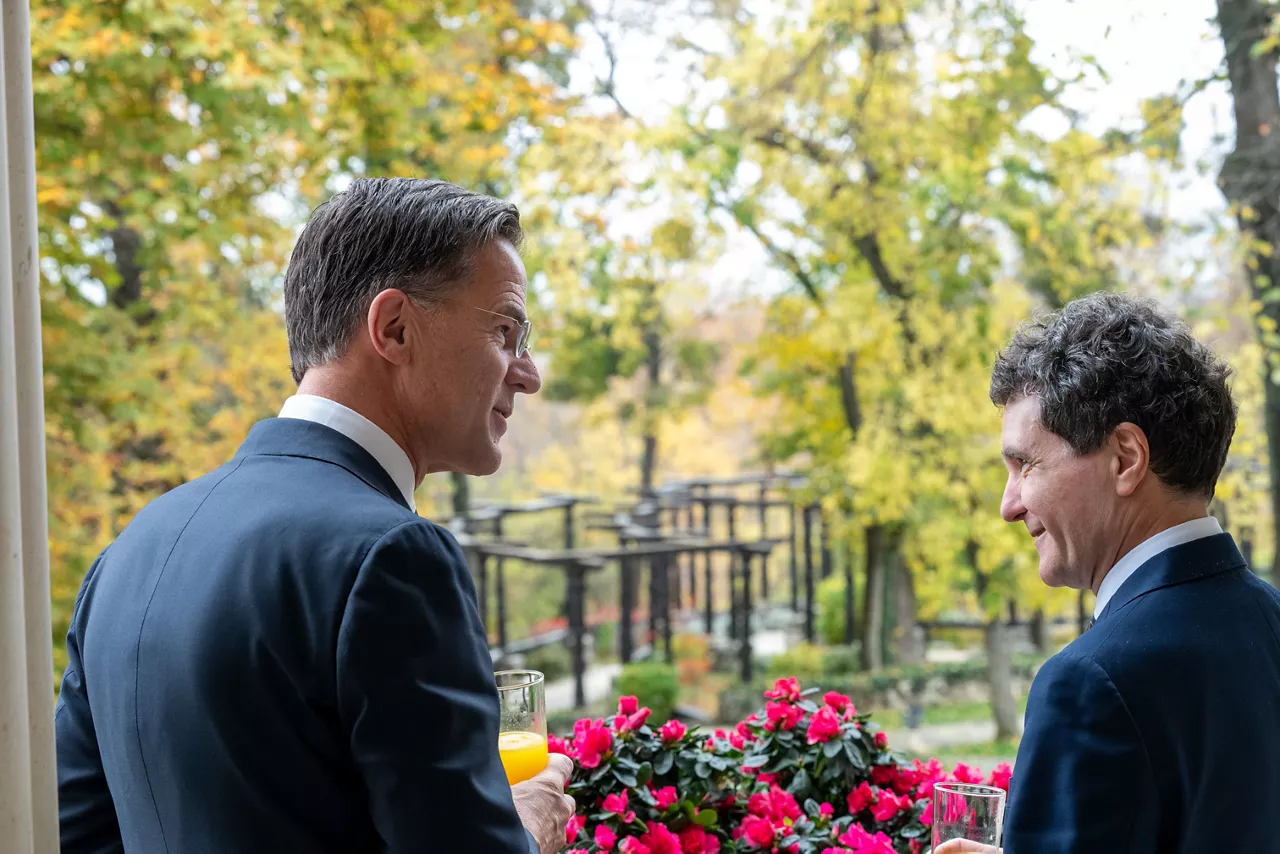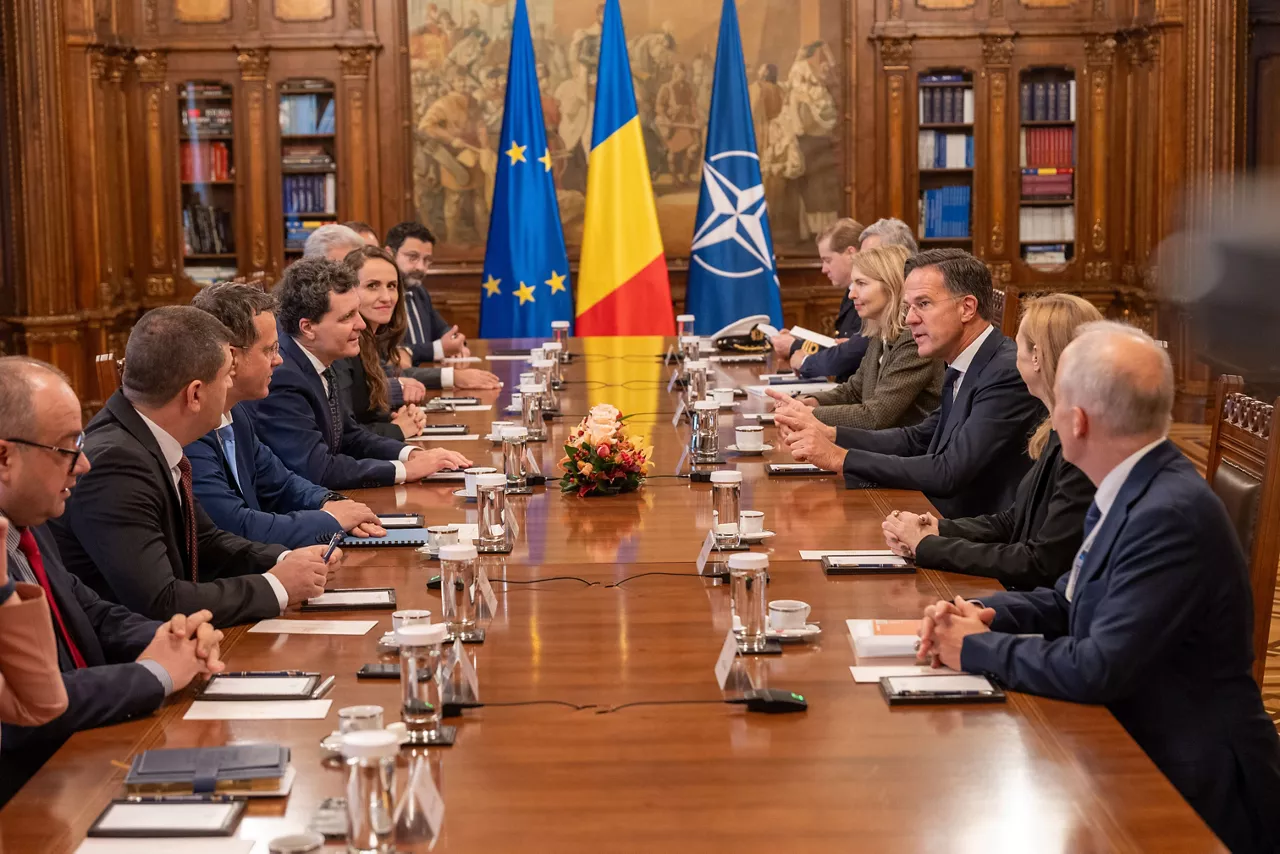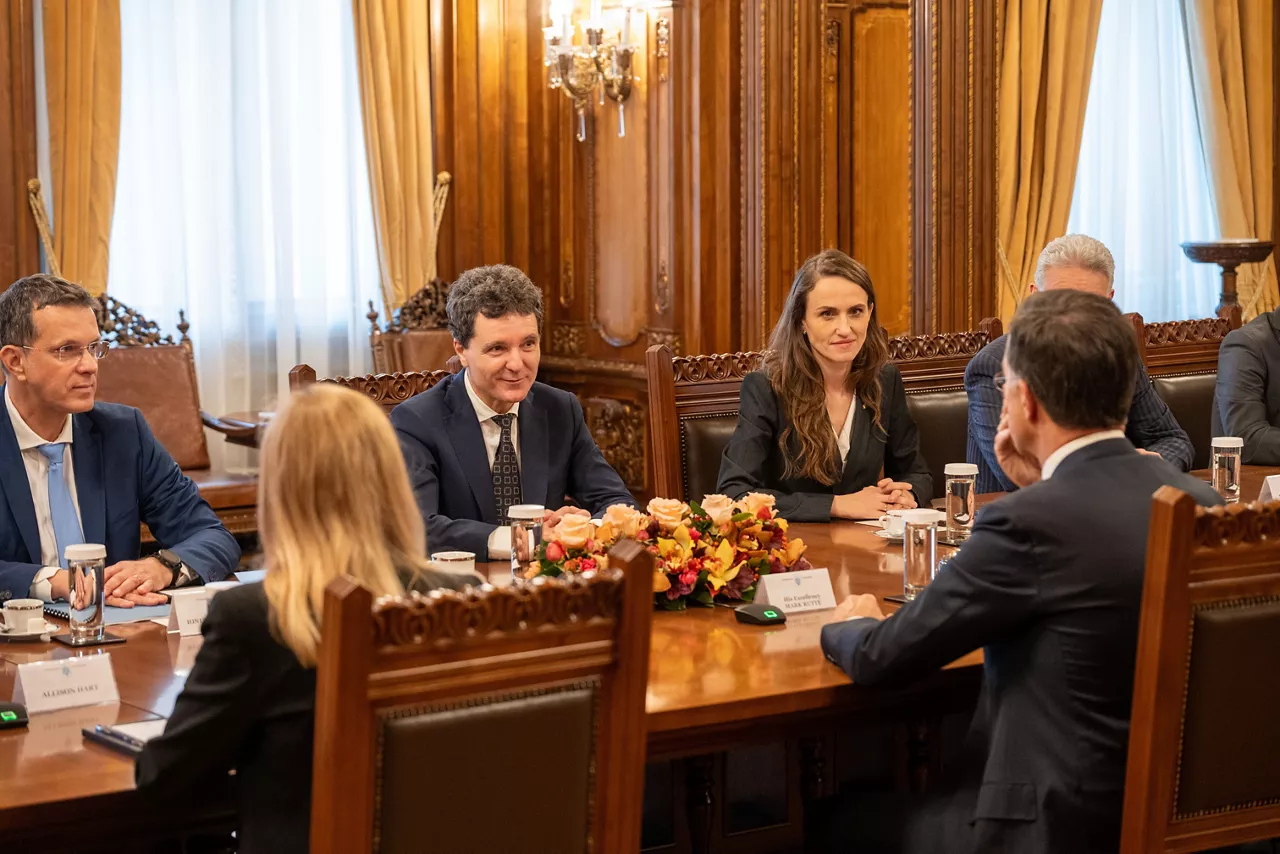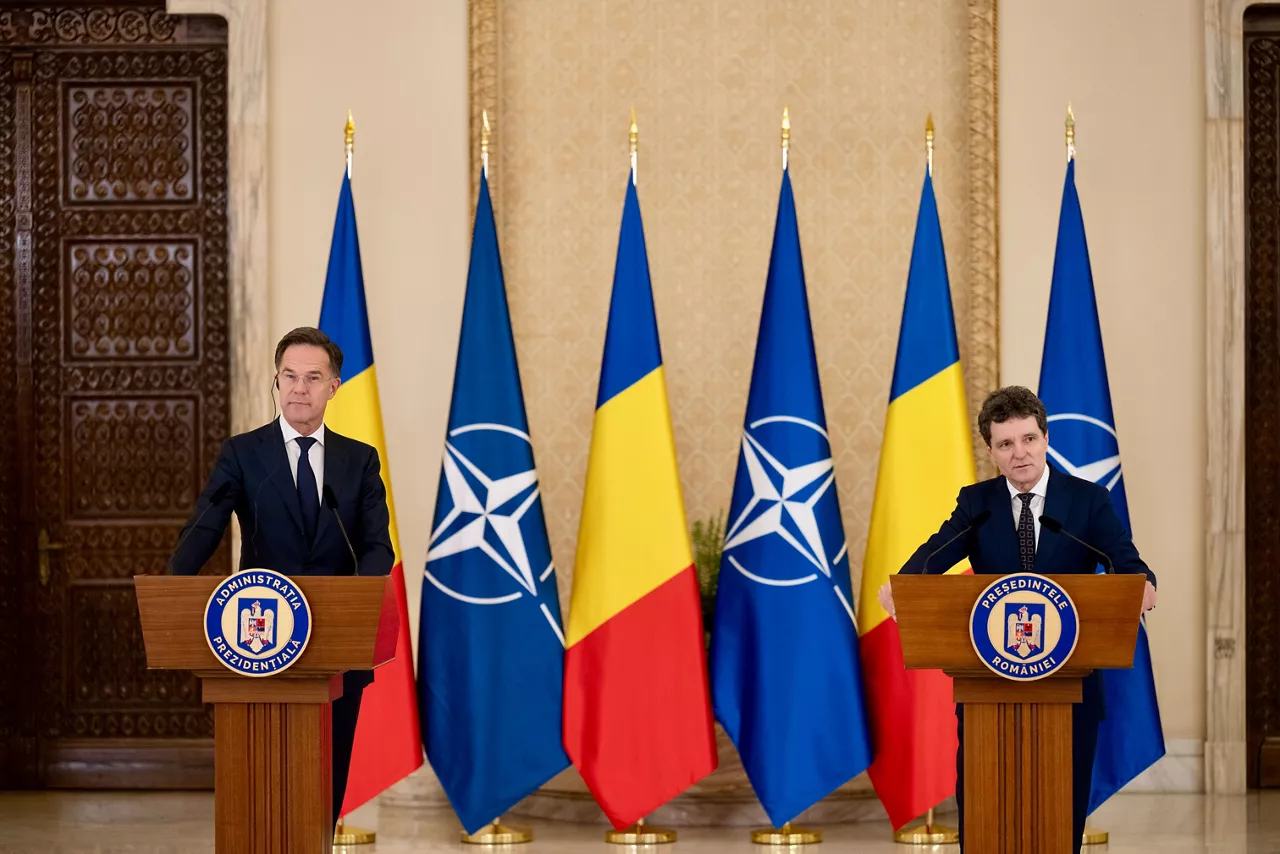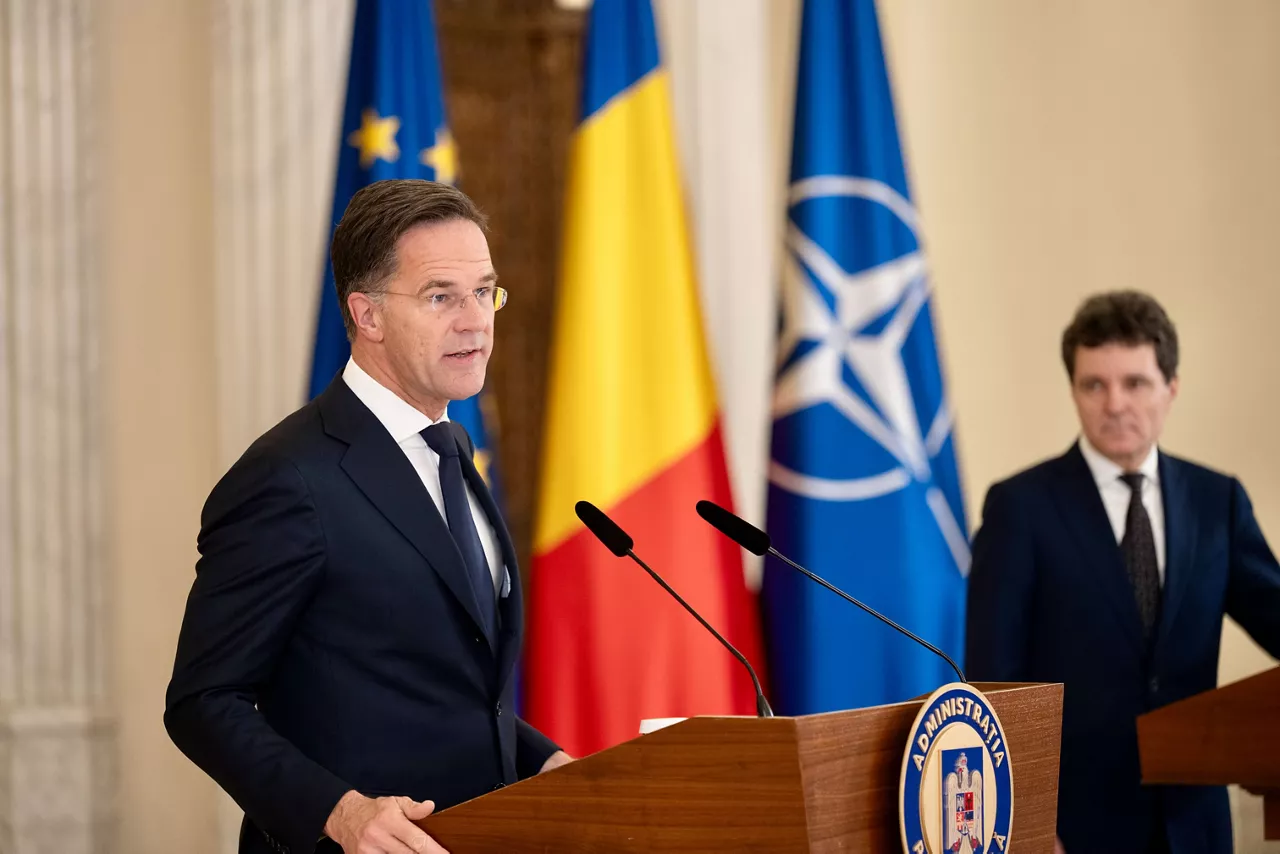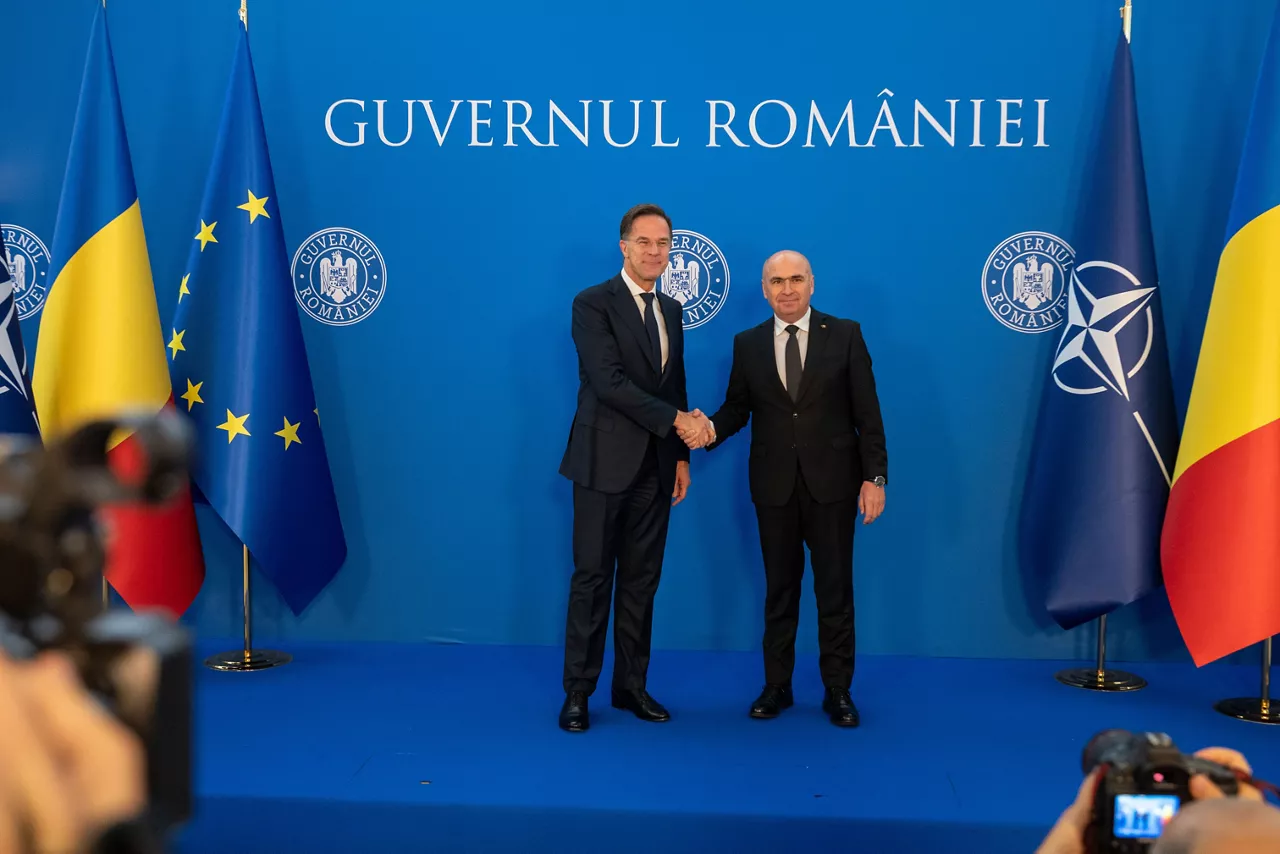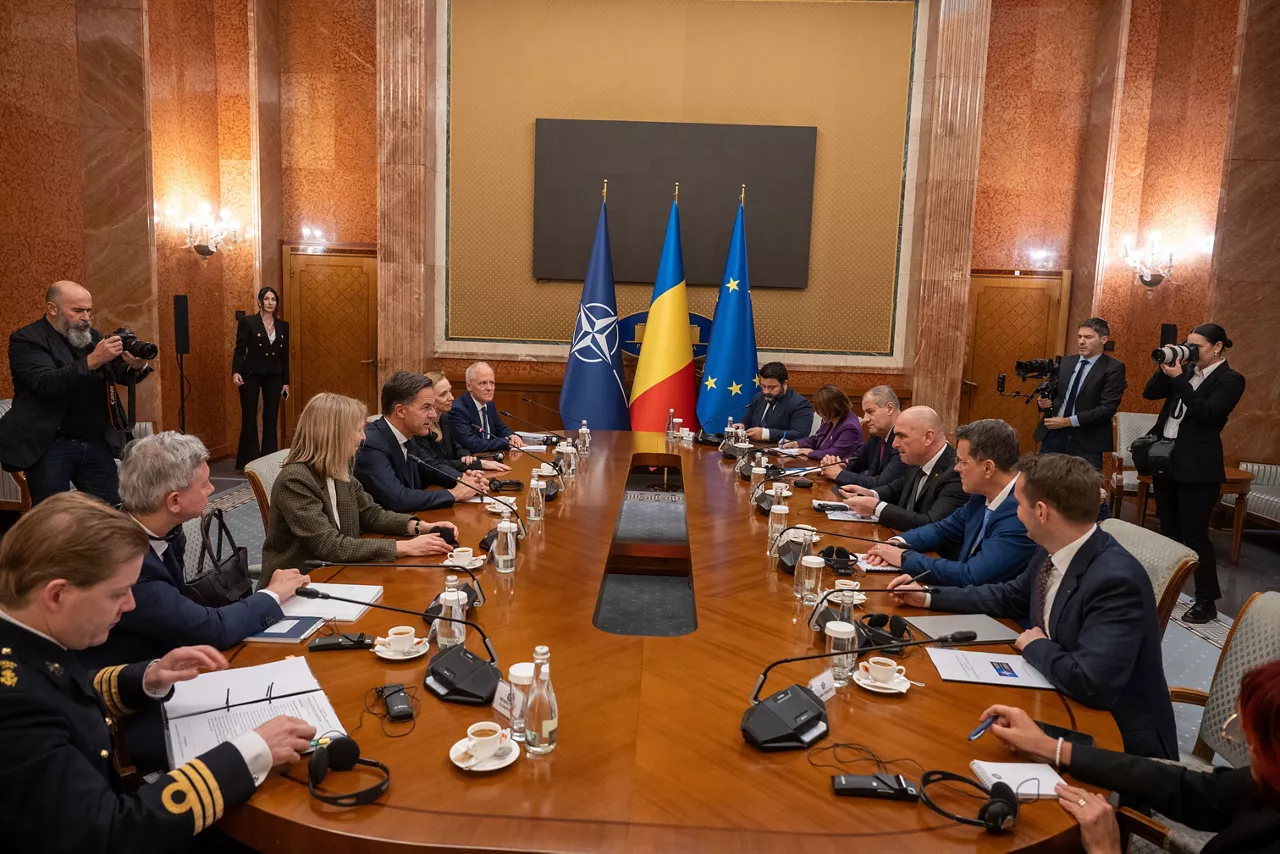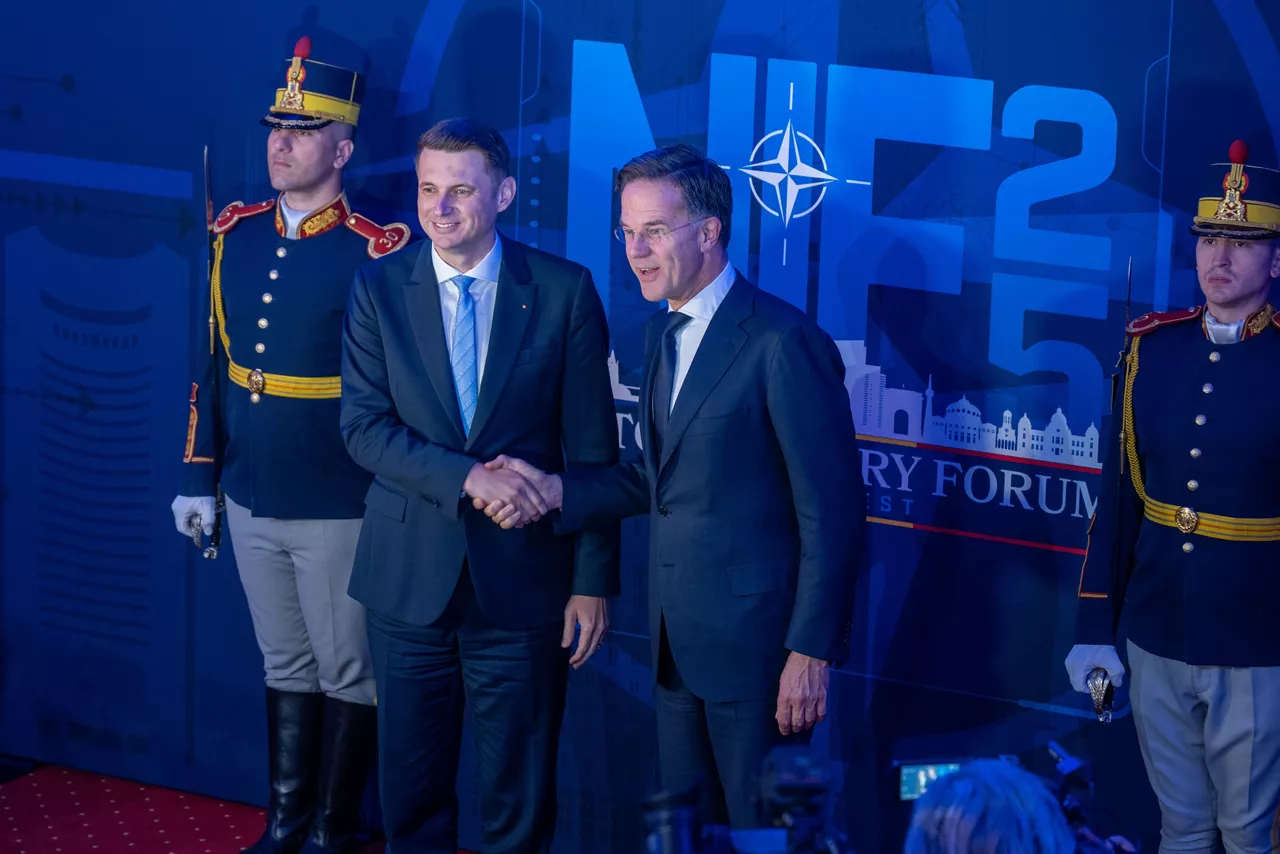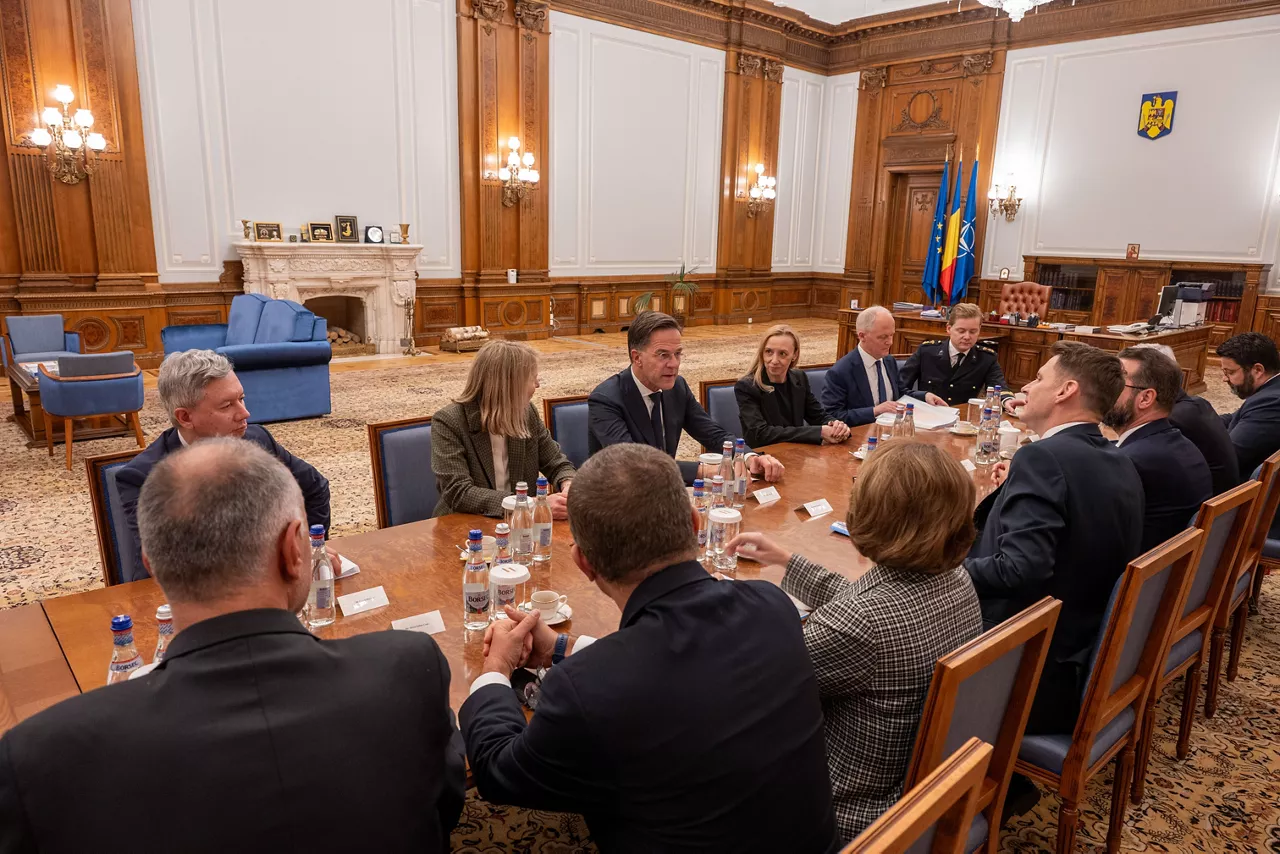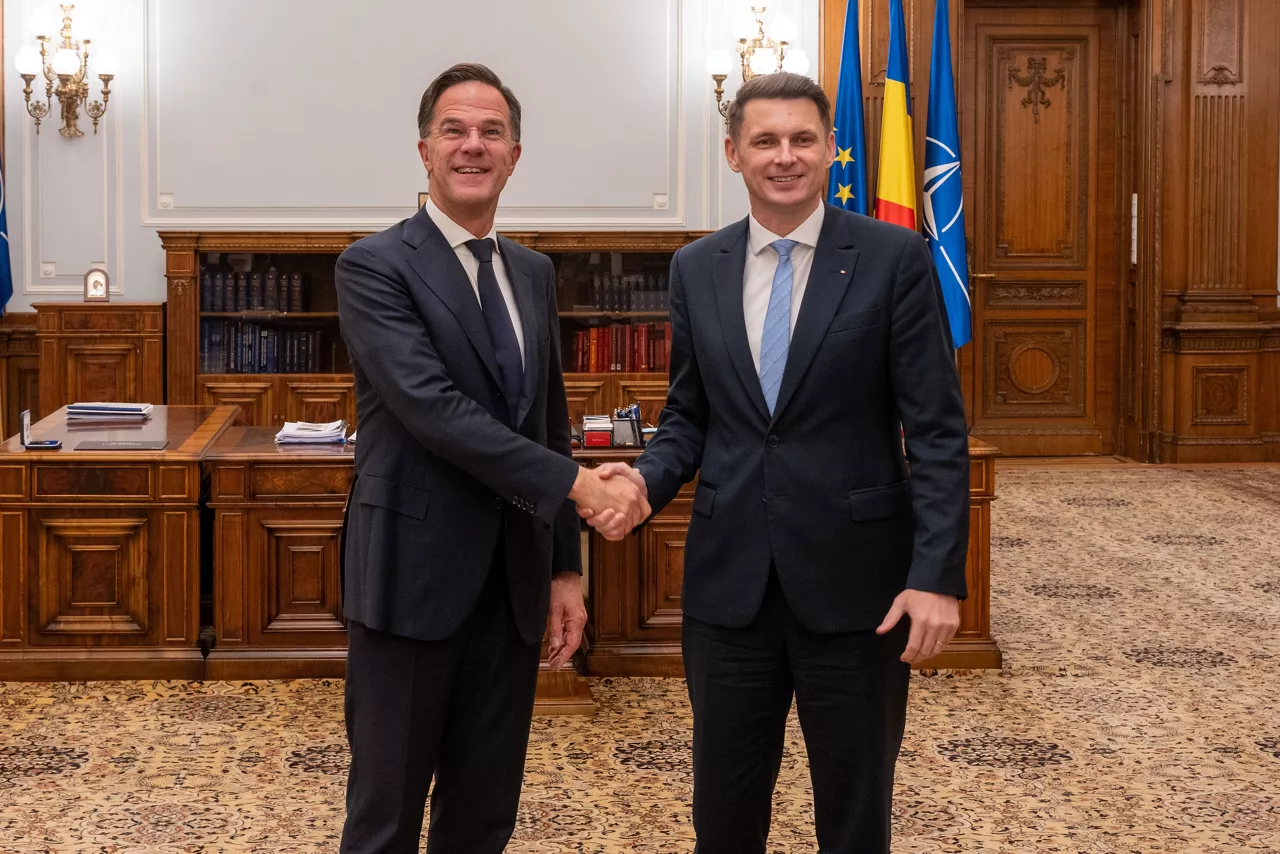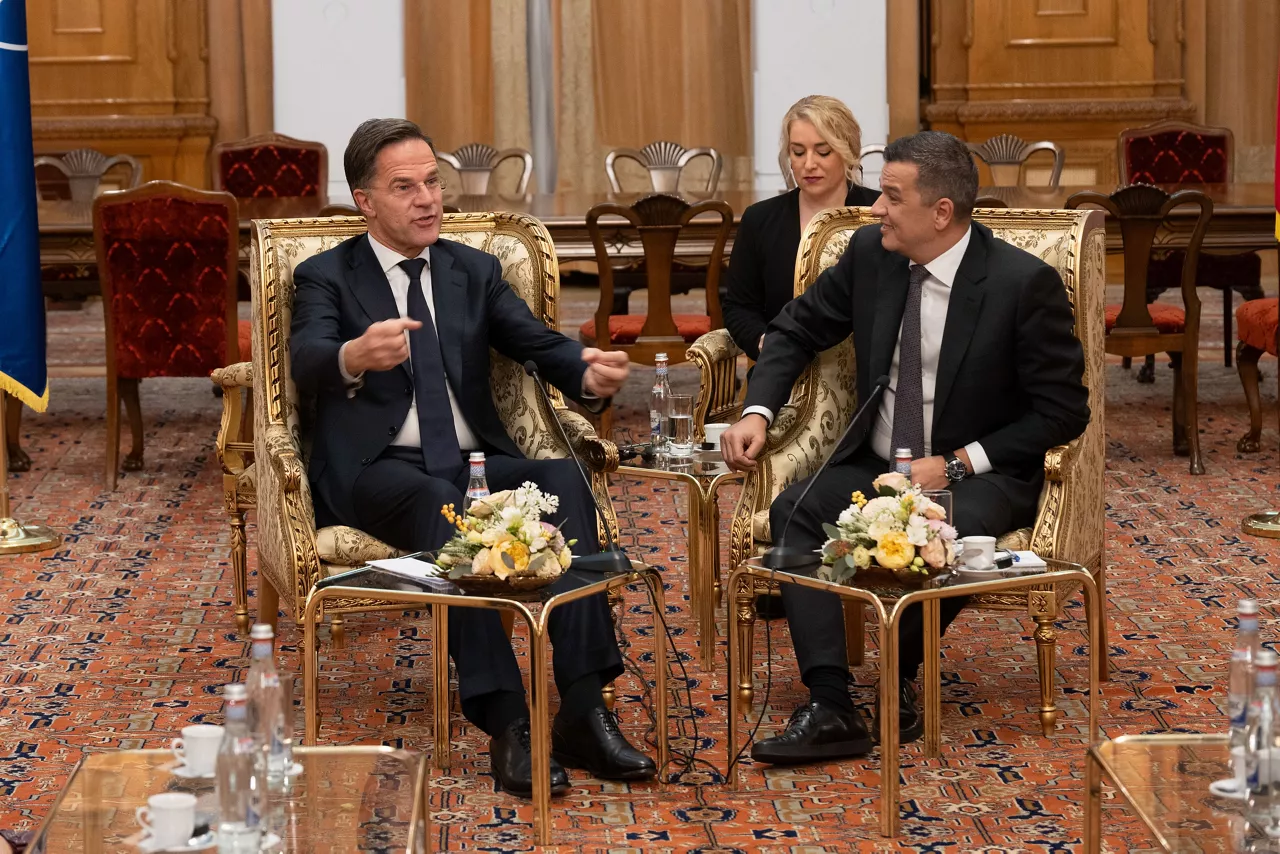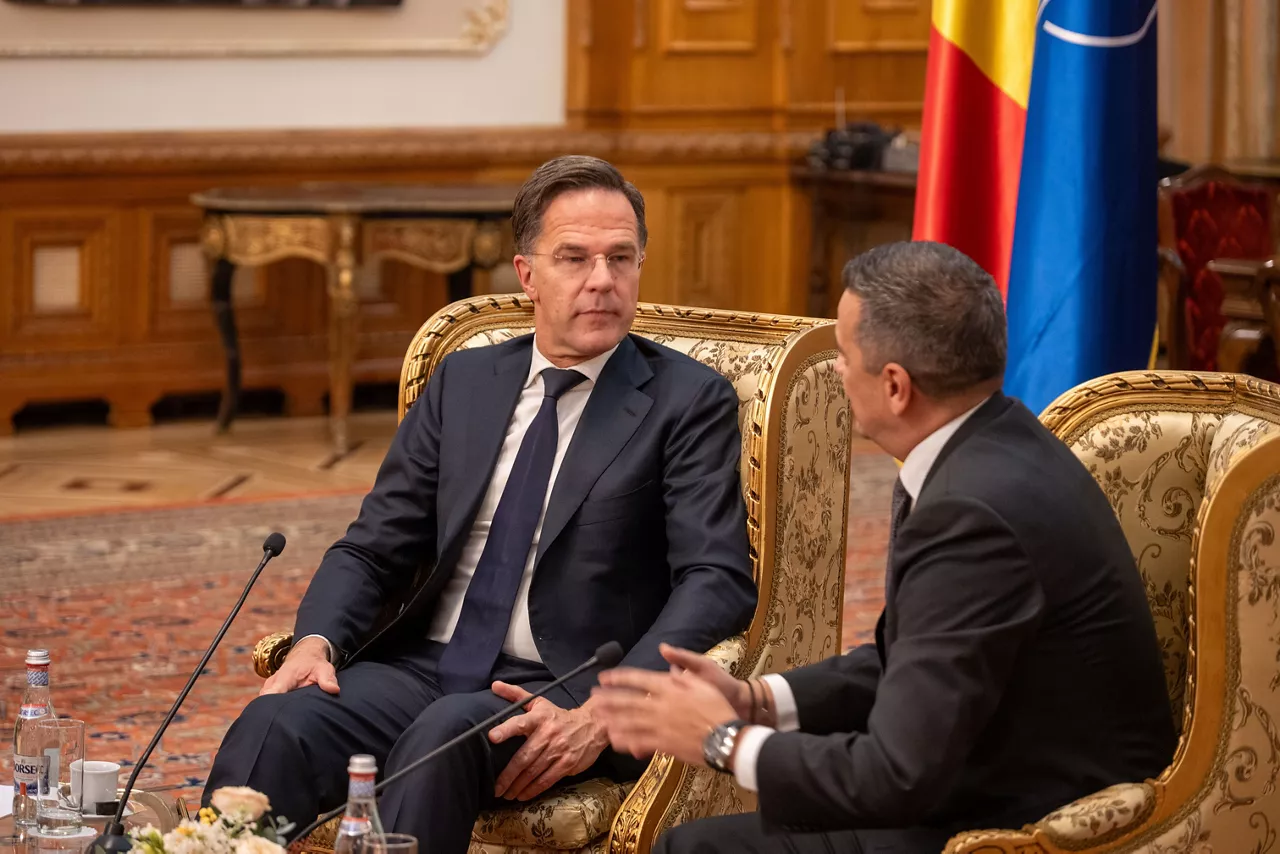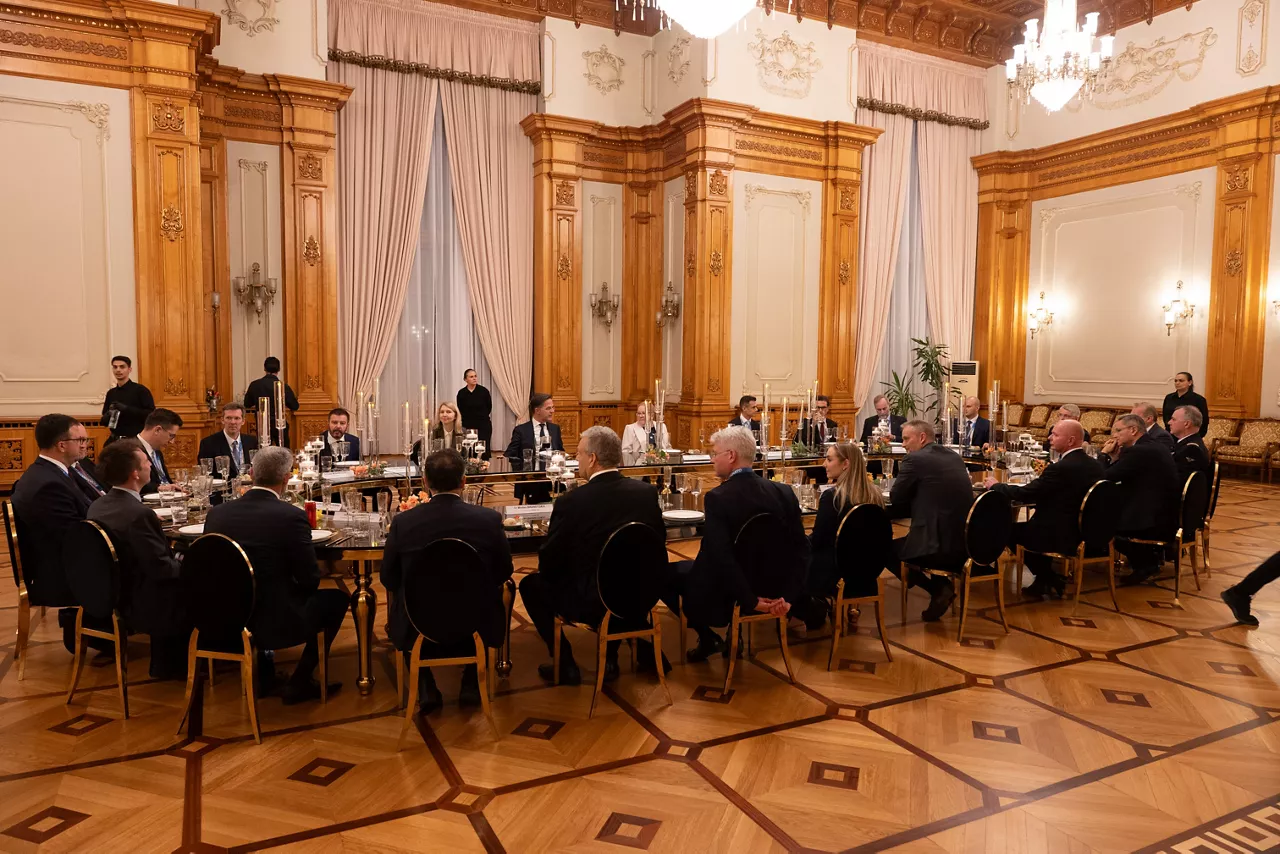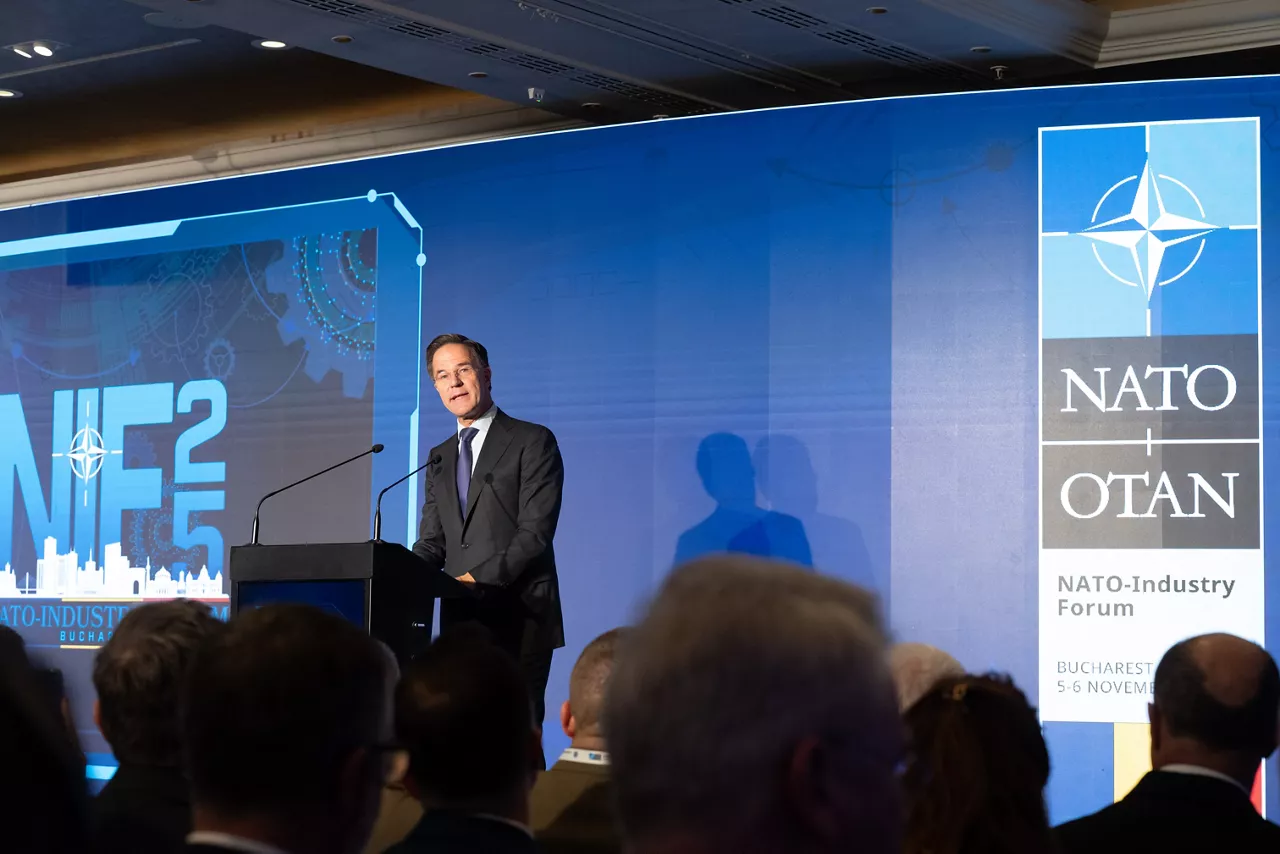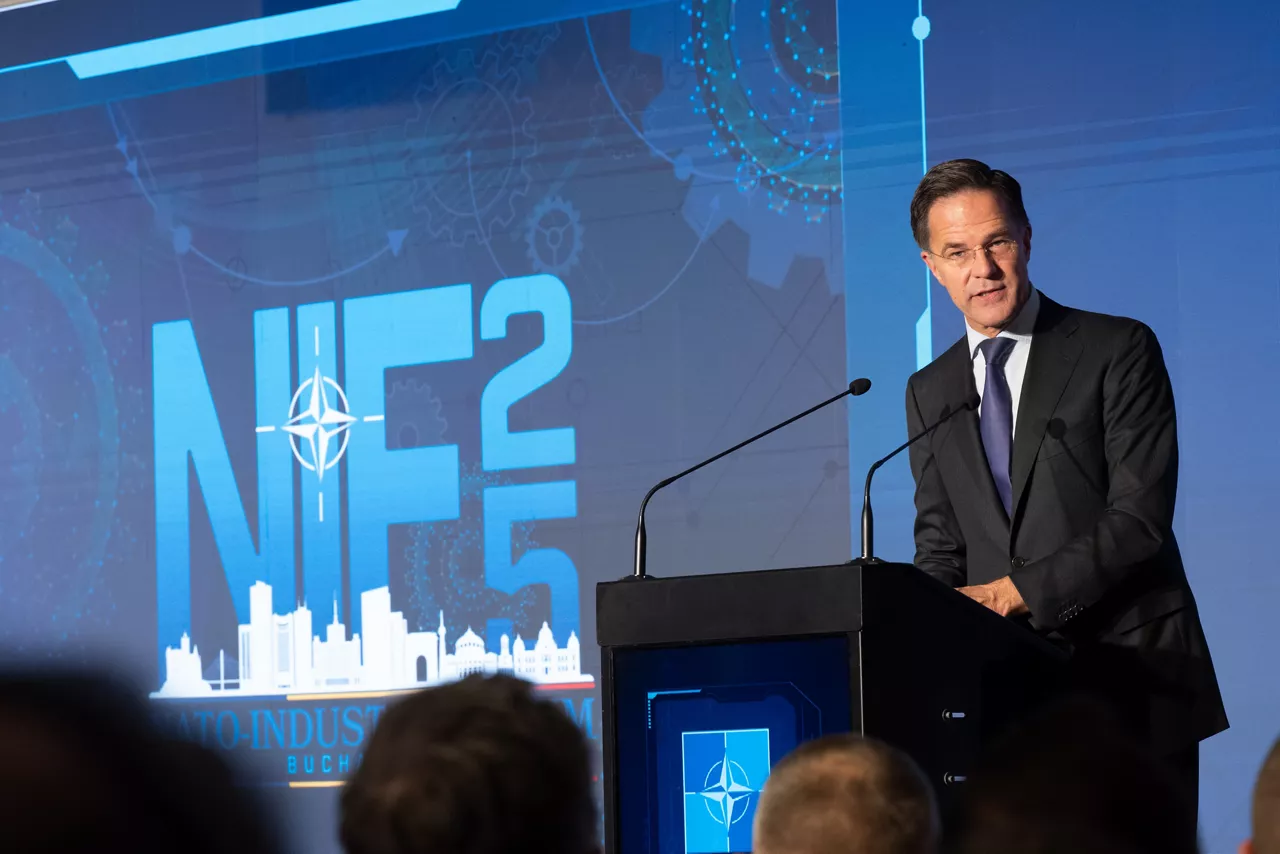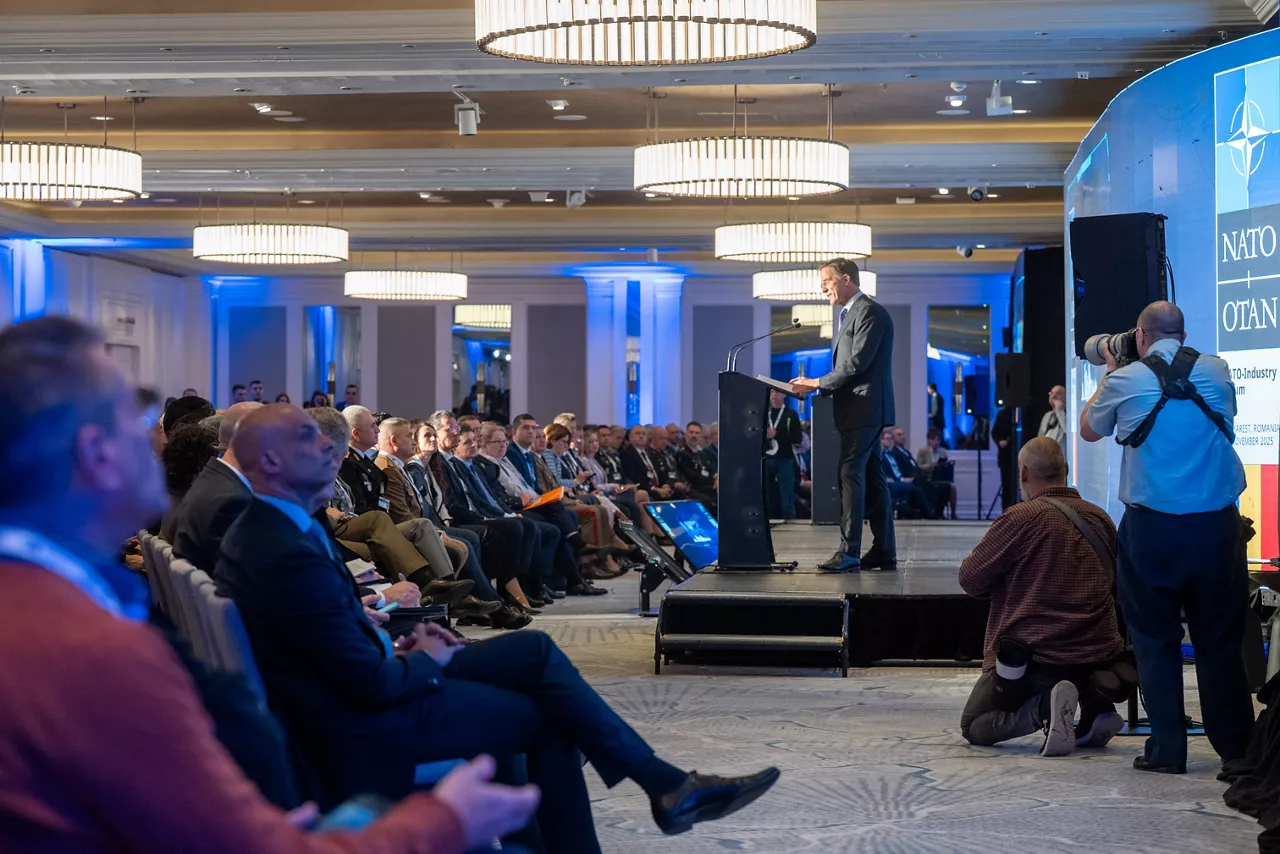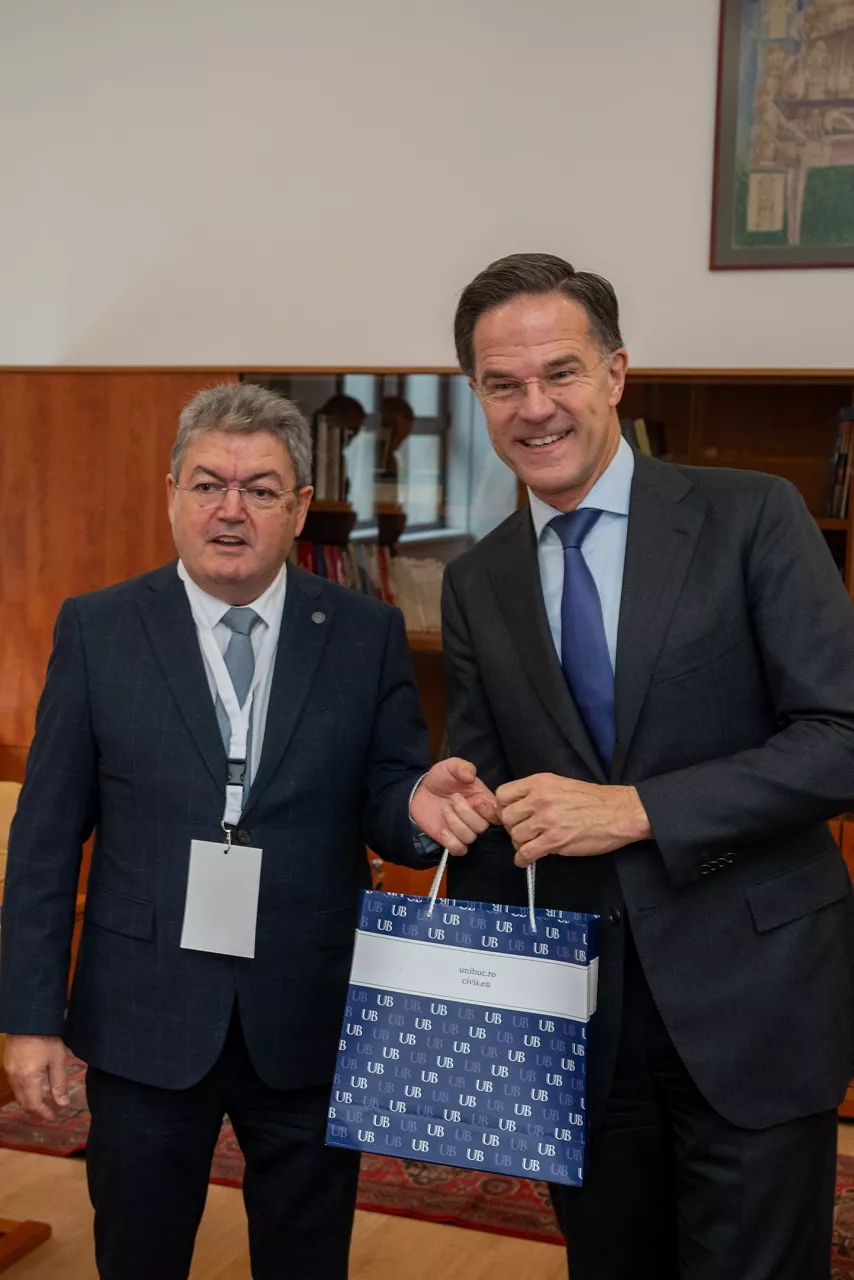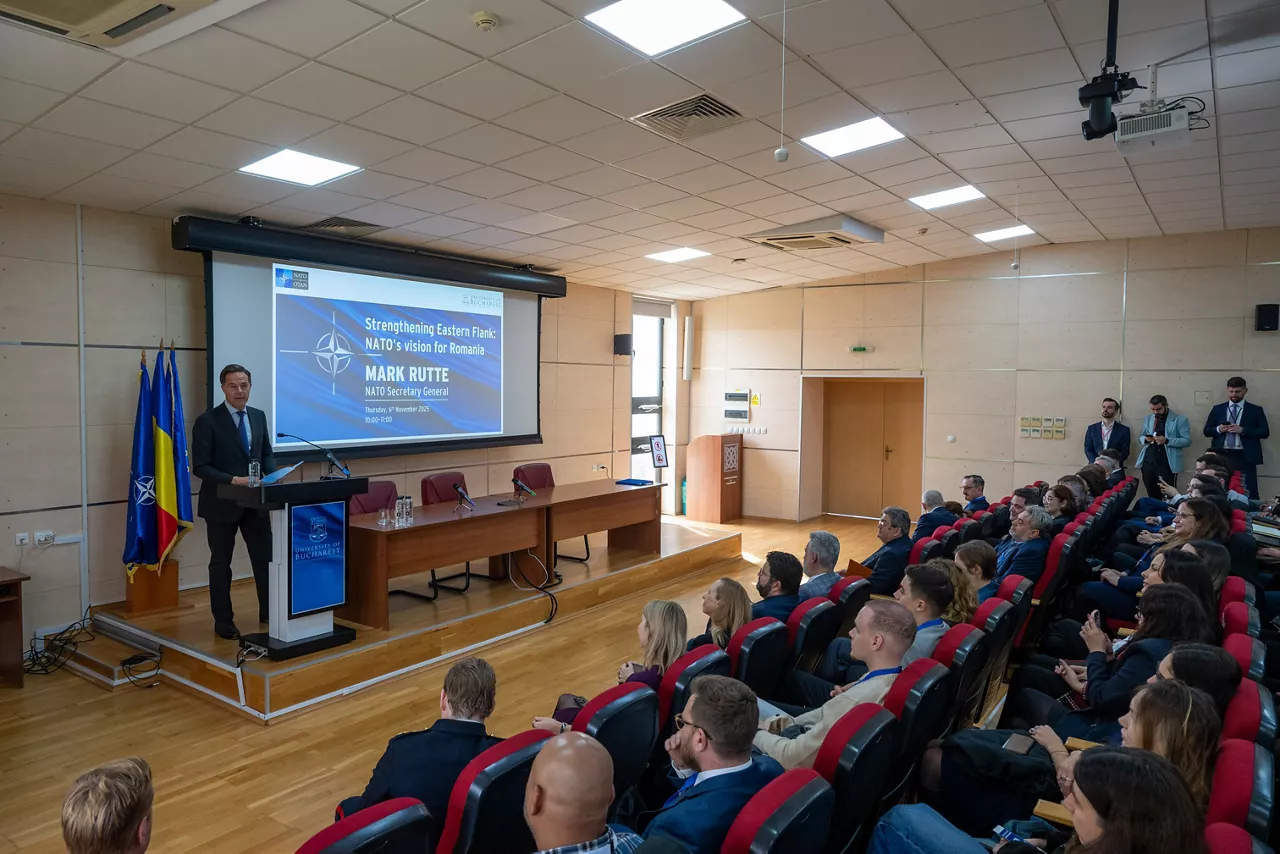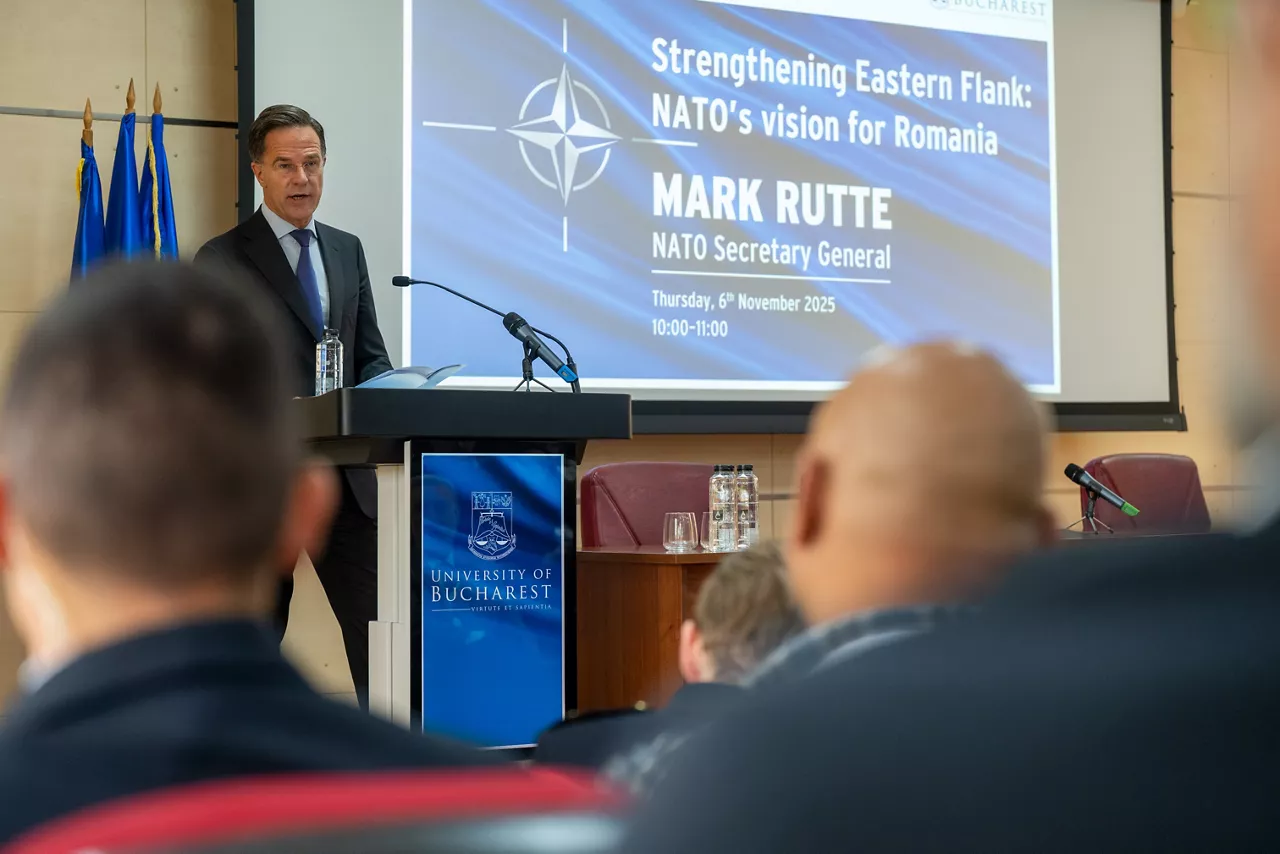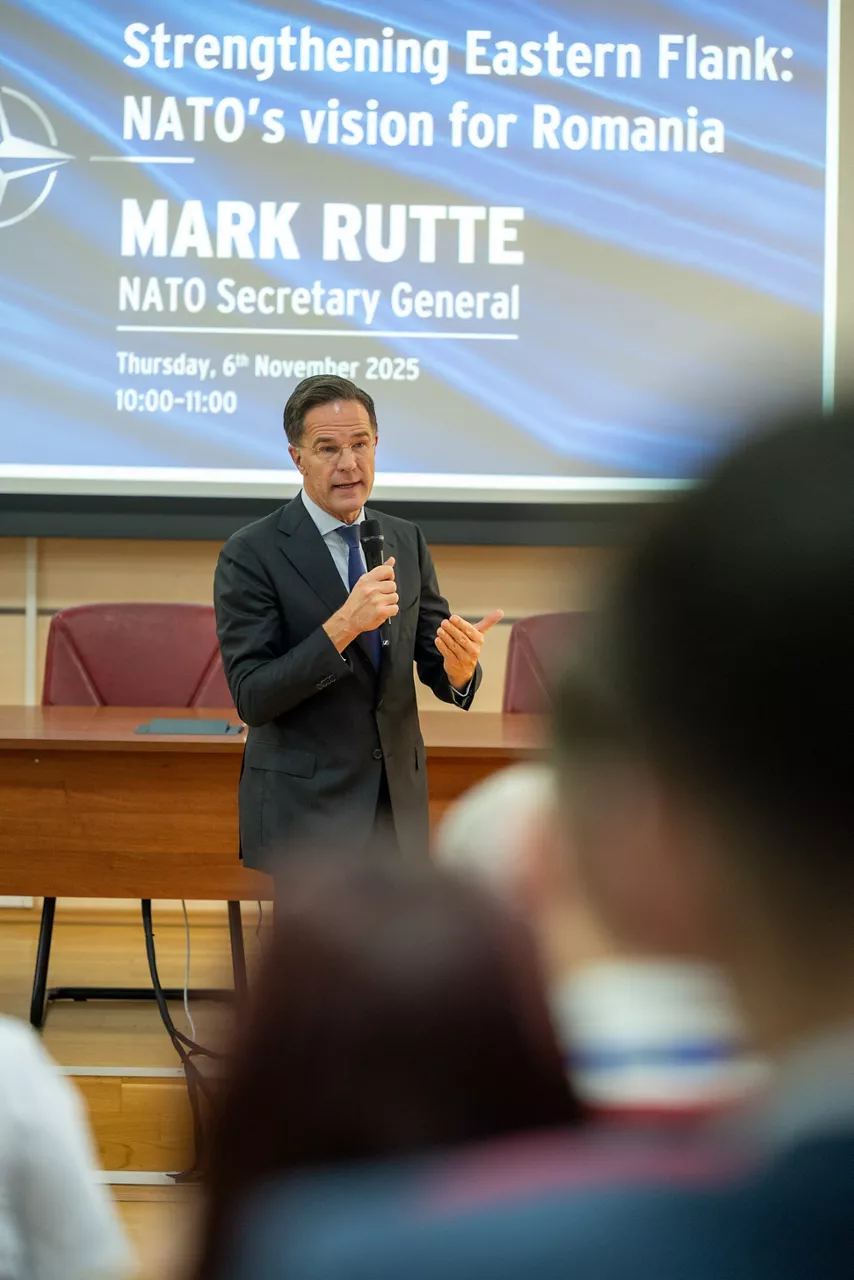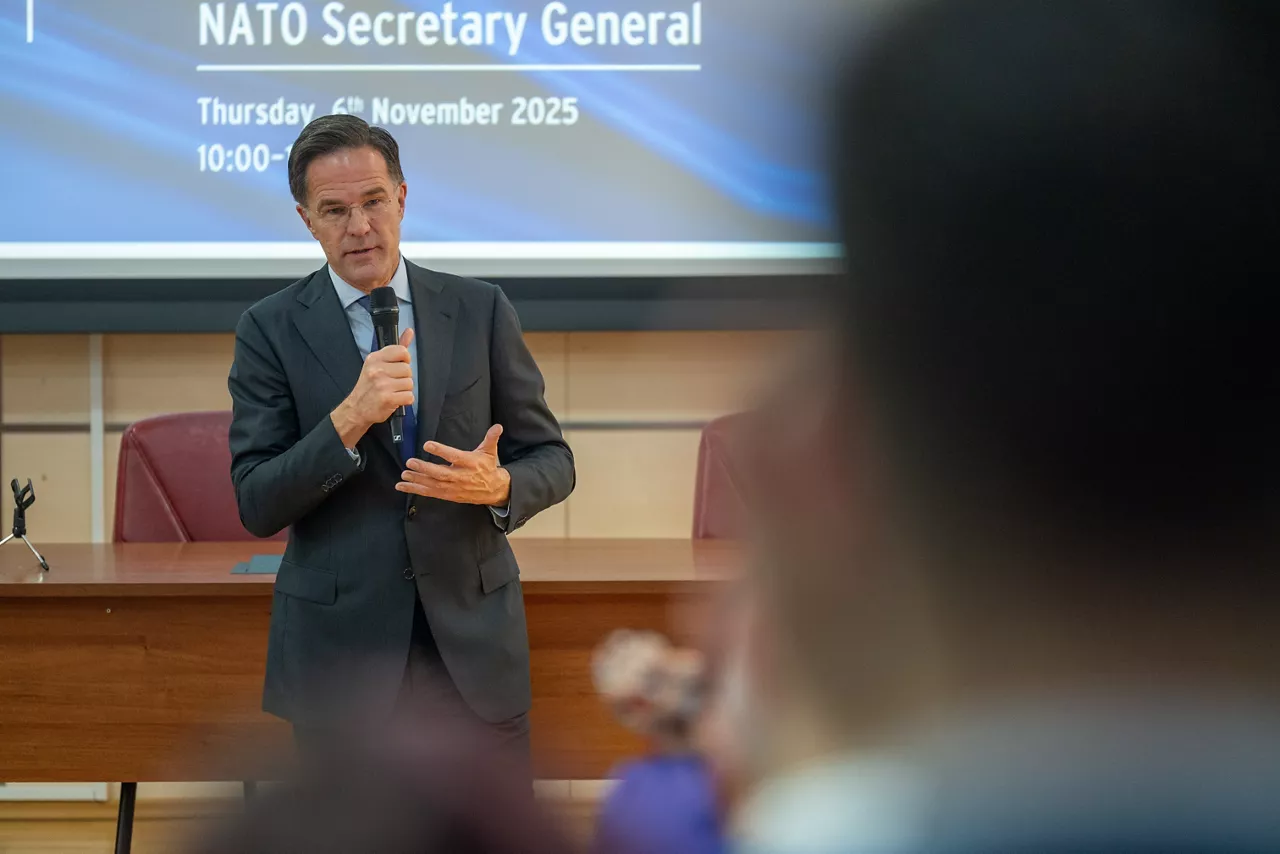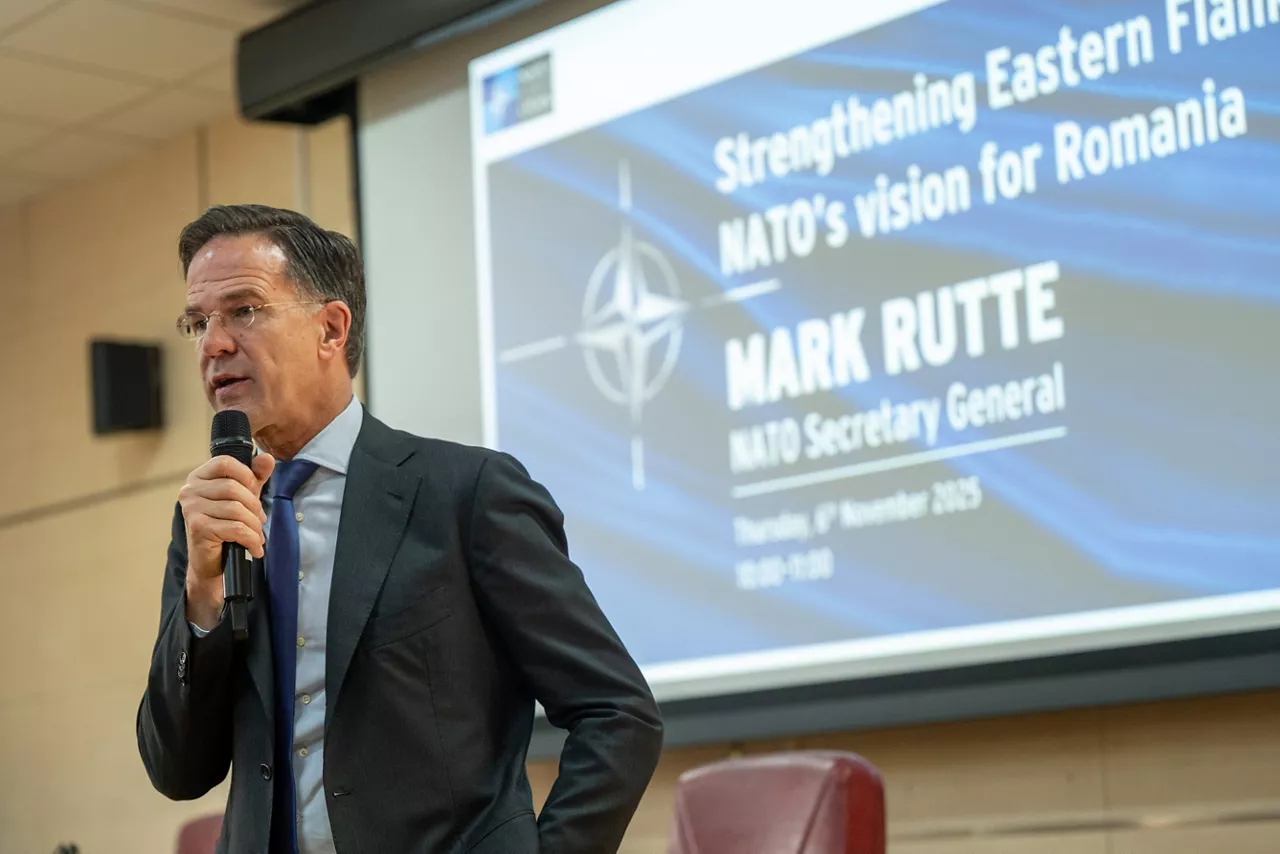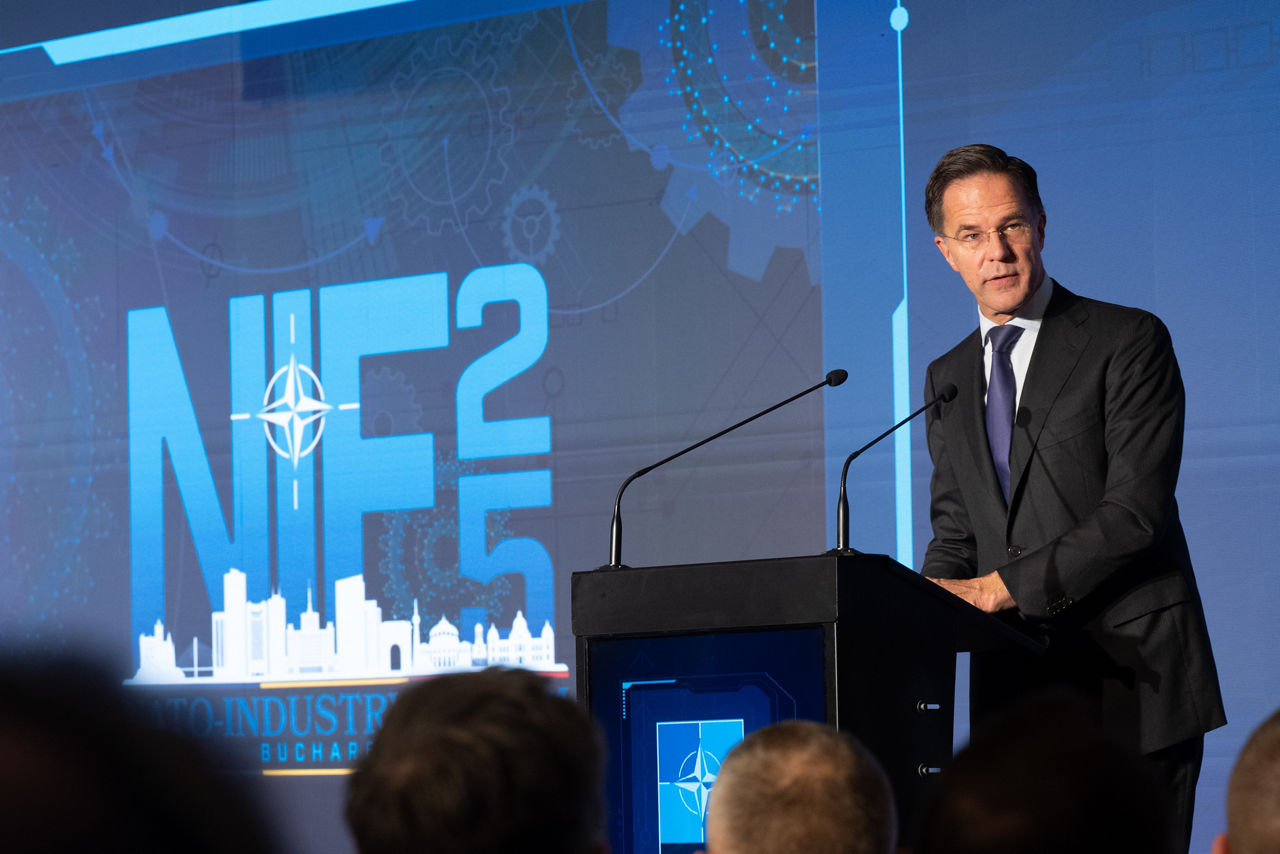Le seul endroit pour accéder au contenu vidéo de qualité broadcast de l'OTAN
Accédez aux ressources médiatiques officielles de l'OTAN. Un contenu de qualité professionnelle, diffusé sur les dernières actualités. La référence pour les professionnels des médias.

Se connecter
COMPTE MULTIMÉDIA
Le seul endroit pour accéder au contenu vidéo de qualité broadcast de l'OTAN
Accédez aux ressources médiatiques officielles de l'OTAN. Un contenu de qualité professionnelle, diffusé sur les dernières actualités. La référence pour les professionnels des médias.

Vérifiez votre boîte de réception et entrez le code de vérification
Vous avez créé votre compte avec succès
Désormais, vous pouvez télécharger des versions complètes ou partielles de nos vidéos depuis notre site Web.
Abonnez-vous à notre newsletter
Si vous souhaitez également vous abonner à la newsletter et recevoir nos dernières mises à jour, cliquez sur le bouton ci-dessous.
Entrez l'adresse e-mail avec laquelle vous vous êtes inscrit et nous vous enverrons un code pour réinitialiser votre mot de passe.
Vous n'avez pas reçu de code ? Envoyer un nouveau code
Le mot de passe doit comporter au moins 12 caractères, sans espaces, inclure des lettres majuscules/minuscules, des chiffres et des symboles.
Votre mot de passe a été mis à jour
Cliquez sur le bouton pour revenir à la page sur laquelle vous étiez et connectez-vous avec votre nouveau mot de passe.
Joint press conference
by NATO Secretary General Mark Rutte with President of Romania Nicuşor Dan
05 novembre 2025
8 MIN DE LECTURE
(As delivered)
President Dan, dear Nicuşor, it’s a pleasure to be here, with you, in Bucharest.
And we had already, indeed, very fruitful discussions on my first visit in this capacity to Romania.
For more than 20 years now, Romania has been a steadfast and valued Ally.
You host the French-led NATO Forward Land Forces – strengthening our deterrence and defence posture on our Eastern Flank.
Next week, as part of the Dacian [Fall] Exercise, NATO will exercise scaling the presence from a battalion to a brigade.
Romania provides important leadership in the context of the Black Sea region – you already mentioned it – which is, can I stress this, of strategic importance to the whole of the Alliance.
NATO also highly values Romania’s, Bulgaria’s and Türkiye’s efforts in this Black Sea region to expand demining and patrols.
You contribute to NATO missions in Kosovo and Iraq, contributing to peace and stability beyond your borders.
And you are a strong supporter of Ukraine as they defend against Russian aggression and pursue peace.
Romania understands the importance of investing in defence, and you lead by example.
You already spend more than 2 percent of your GDP on defence, with plans to increase to 3.5 percent by 2030. And an additional 1.5 percent of GDP is earmarked for defence-and security-related investment.
In all these ways, it is clear that Romania is invested in NATO – and, let me be clear, NATO is invested in Romania.
In recent months you’ve seen Russian drone incursions into your airspace.
NATO’s response has been swift and decisive.
Regardless of intent, NATO takes these incidents extremely seriously.
And we will remain vigilant.
Deterrence is the bedrock of our defence, and so, we are making crystal clear that NATO is ready, willing, and able to do what it takes to defend.
This includes, indeed, activities like Eastern Sentry, that add strength and flexibility to our posture along the entire Eastern flank – including the Black Sea region. This means more capabilities that can be brought to bear whenever and wherever needed.
There should be no doubt of NATO’s resolve to protect the Alliance on land, at sea, and in the air.
And we are working together with industry to secure the technology, artillery and ammunition we need to continue to defend every inch of Allied territory.
And here, too, Romania is playing an important role.
Thank you again, because today and tomorrow, I will attend, thanks to your hospitality, the NATO Industry Forum here in Bucharest – an event that really illustrates the best of NATO. Bringing together civilian and military, Allies and partners, government officials and industry leaders, from big firms to the small start-ups.
And we will be meeting with one shared goal: to help bridge the gap between what we have and what we need.
NATO and the defence industry are working hand-in-hand to accelerate innovation, procurement and production.
We are working together to scale up production while driving down cost, to speed up innovation and adaptation, and stay ahead of the curve.
Because our adversaries will continue to test us, we cannot be found wanting.
We have vital work to do together.
President Dan, dear Nicuşor, thank you, once again, for your warm welcome and your leadership. Again, thanks so much.
Question: President and NATO Secretary General, what has happened with withdrawal of hundreds of troops from the territory of our country was of concern, and some believe that was an invitation for Russia. That's why I would like to ask you, how has NATO seen this change, and you've talked about the military capabilities that are to be brought. Are there any states so far that want to supplement this?
NATO Secretary General, Mark Rutte: [Adjustments to] force posture are not unusual, and even with this adjustment, the US force posture in Europe remains larger than it has been for many years. There are still many more US forces on the continent than before 2022, and you have seen the commitment by President Trump and his Administration, made very clear at the Summit in The Hague of his total commitment to NATO and to our joint endeavours.
And maybe focus a little bit on the two main subjects today, the forward land forces, I already have discussed what is happening and that we are exercising to scale them up to a brigade level, which is very important.
But let me also say a little bit more about Eastern Sentry. First of all, it is deliberately designed to be flexible and responsive at the same time. It will involve traditional air, land and sea based military assets, but it will also incorporate innovative technologies and tactics designed to deal with all the new and novel challenges, like those from sea drones just as we have done with Baltic Sentry.
This military activity not only adds additional assets from Allies, it also better connects the range of assets already available all along our Eastern flank, from the High North to the Black Sea and beyond, and therefore it adds flexibility, it adds strength to our posture, and it will make clear that as a defensive Alliance, we are always ready to defend. And with this Eastern Sentry, we can bring more capabilities to bear wherever and whenever needed, so also in Romania.
Question: As you have already mentioned, Black Sea and security at the Black Sea we see currently in Poland and the Baltic states, an increased presence, both of American troops and North Atlantic Alliance. I'd like to ask first of all, why at present, there is an increased presence in Poland and the Baltic States compared to Romania. And if you believe there is a disbalance between the Black Sea and Poland and also the Baltic states.
NATO Secretary General, Mark Rutte: From the High North to up and including the Black Sea and beyond, that's point number one. And wherever and whenever needed, we can upskill, bring extra support where needed if our defence requires that, including in Romania.
But also, let me stress very much what the President said about the forward land forces, the fact that we are training here to scale them up from 1500 to over 5000 troops, so that we are able, whenever necessary, to immediately get all the troops in Romania needed to bring the forward land force at the level where they can help to defend Romania. But let me add another thing, and this is the following, yes, we have Eastern Sentry, fantastic, great. We need it because it defends the whole Eastern flank, again, from the High North, up to and including the Black Sea and beyond. And yes, we have to forward land forces in eight countries now, including Romania, because it helps us with many countries participating to defence all the countries on the Eastern flank.
But this is not all. Of course, you have your own proud Romanian armed forces to defend Romania. But if an attack would take place from whoever, be it the Russians or whoever would attack NATO or would attack Romania, particularly. It is not only Eastern Sentry which will help you. It is not only the forward land forces which will help you. It is then the whole of NATO which will come to the rescue with its fleet of F-35s, its full naval capacity and its full land forces capacity, this is how NATO works, and not only a theory, but because we have all the plans in place to make sure that we defend every inch of Allied territory.
And I really want to stress this, because otherwise there is this feeling we have all these abbreviations and activities. We need them on a day-to-day basis. We can scale them up wherever necessary. We can bring more capabilities where needed. But in the end, if this country would be under attack, it is 31 other nations coming to the rescue of Romania, this is how NATO works. And I think this makes us unbeatable, absolutely unbeatable, and that is why I believe that nobody will ever try.
Question: Question for both of you: if the European Union and NATO are to make concrete steps in order to implement that idea announced by the President of the European Commission that the anti-drone wall will transform into an anti-drone shield, or every country needs to take it by itself?
NATO Secretary General, Mark Rutte: Between NATO and the European Union, NATO is about the standard setting, about the capabilities. It is about the hard military side of a potential conflict. We are a defensive Alliance, but we have to be prepared for any eventuality. The EU is extremely capable when it comes to the internal market, when it comes to organising the defence industrial base, bringing countries and companies together.
And what we are doing basically when it comes to these initiatives coming out of NATO, including an Eastern Sentry, because Eastern Sentry has this component of becoming step-by-step better and better in our anti-drone technologies. And what the EU is doing when it comes to anti-drone technologies, we are really leveraging each other's strengths. This is how it works, and this is why that combination is so is so very powerful.
Question: I just had a couple of follow-up questions on the first colleague, the last questions, the first being, even if it doesn't have any concrete material impact, symbolically, at least does the US troop withdrawal from Romania send a bad signal to Russia at a time when Putin is ramping up hybrid attacks against the Alliance and have any other Allies already committed to replace these troops with their own?
NATO Secretary General: Again, this, this happens all the time. I really think we are making a little bit too much out of this. So the US has a big presence in Europe, and that presence is there. And within that presence, they are always looking, how can they make best use of their resources they have in Europe within of course, helping NATO to defend every inch of NATO territory. These adjustments take place. Please don't read too much into that. And the fact that we have Eastern Sentry, that we have the forward land forces that we are scaling up to brigade level in the exercise next week, and all the other stuff we are doing is evidence that we are as strong as is necessary. And as I said, wherever and whenever needed, we can always scale up collectively, including in Romania.
Actifs connexes
GALERIES
NATO Secretary General visits Romania
05 November 2025 - 06 November 2025
NATO Secretary General Mark Rutte arrives in Bucharest - Welcome by Dan Neculăescu, Permanent Representative of Romania to NATO
NATO Secretary General Mark Rutte arrives in Bucharest - Welcome by Dan Neculăescu, Permanent Representative of Romania to NATO
NATO Secretary General Mark Rutte meets with Nicușor Dan, President of Romania
NATO Secretary General Mark Rutte meets with Nicușor Dan, President of Romania
NATO Secretary General Mark Rutte meets with Nicușor Dan, President of Romania
NATO Secretary General Mark Rutte meets with Nicușor Dan, President of Romania
NATO Secretary General Mark Rutte meets with Nicușor Dan, President of Romania
NATO Secretary General Mark Rutte meets with Nicușor Dan, President of Romania
Joint press conference by the NATO Secretary General Mark Rutte with Nicușor Dan, President of Romania
Joint press conference by the NATO Secretary General Mark Rutte with Nicușor Dan, President of Romania
NATO Secretary General Mark Rutte meets with Ilie Bolojan, Prime Minister of Romania
NATO Secretary General Mark Rutte meets with Ilie Bolojan, Prime Minister of Romania
NATO Secretary General Mark Rutte meets with Ilie Bolojan, Prime Minister of Romania
NATO Secretary General Mark Rutte meets with Mircea Abrudean, President of the Senate
NATO Secretary General Mark Rutte meets with Mircea Abrudean, President of the Senate
NATO Secretary General Mark Rutte meets with Mircea Abrudean, President of the Senate
NATO Secretary General Mark Rutte meets with Sorin Grindeanu, President of the Chamber of Deputies
NATO Secretary General Mark Rutte meets with Sorin Grindeanu, President of the Chamber of Deputies
Opening remarks by NATO Secretary General Mark Rutte at the reception of the NATO Industry Forum
Opening remarks by NATO Secretary General Mark Rutte at the reception of the NATO Industry Forum
NATO Secretary General Mark Rutte at the reception of the NATO Industry Forum
NATO Secretary General Mark Rutte hosts a dinner with CEO's of Allied Defence Industry companies
NATO Secretary General Mark Rutte meets with CEO's at the NATO Industry Forum
Remarks by NATO Secretary General Mark Rutte at the NATO-Industry Forum
Remarks by NATO Secretary General Mark Rutte at the NATO-Industry Forum
Remarks by NATO Secretary General Mark Rutte at the NATO-Industry Forum
Remarks by NATO Secretary General Mark Rutte at the NATO-Industry Forum
NATO Secretary General Mark Rutte visits Bucharest University and engages with students
NATO Secretary General Mark Rutte visits Bucharest University and engages with students
NATO Secretary General Mark Rutte visits Bucharest University and engages with students
NATO Secretary General Mark Rutte visits Bucharest University and engages with students
NATO Secretary General Mark Rutte visits Bucharest University and engages with students
NATO Secretary General Mark Rutte visits Bucharest University and engages with students
NATO Secretary General Mark Rutte visits Bucharest University and engages with students
GALERIES
NATO Secretary General visits Romania




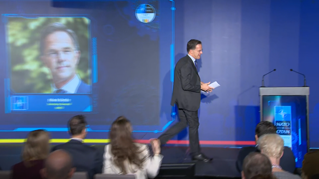
NATO Secretary General visits Romania
NATO Secretary General meets with the Prime Minister of Romania
Usage rights
FERMER
This media asset is free for editorial broadcast, print, online and radio use. It is restricted for use for other purposes.
NATO Secretary General visits Romania
NATO Secretary General meets with the President of Romania
Usage rights
FERMER
This media asset is free for editorial broadcast, print, online and radio use. It is restricted for use for other purposes.
NATO Secretary General visits Romania
Joint press conference by NATO Secretary General and the President of Romania (opening remarks)
Usage rights
FERMER
This media asset is free for editorial broadcast, print, online and radio use. It is restricted for use for other purposes.
NATO Secretary General visits Romania
Joint press conference by NATO Secretary General and the President of Romania (Q&A)
Usage rights
FERMER
This media asset is free for editorial broadcast, print, online and radio use. It is restricted for use for other purposes.
NATO Secretary General visits Romania
Speech by the NATO Secretary General at the NATO-Industry Forum
Usage rights
FERMER
This media asset is free for editorial broadcast, print, online and radio use. It is restricted for use for other purposes.
TITRE
DATE
DURÉE
Joint press conference by NATO Secretary General Mark Rutte with President of Romania Nicuşor Dan
Joint press conference by NATO Secretary General Mark Rutte with President of Romania Nicuşor Dan
Speech by NATO Secretary General Mark Rutte at the NATO-Industry Forum
Speech by NATO Secretary General Mark Rutte at the NATO-Industry Forum
Contenu associé
/

